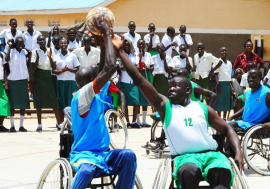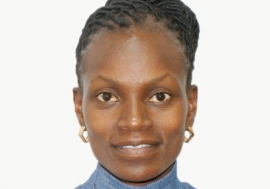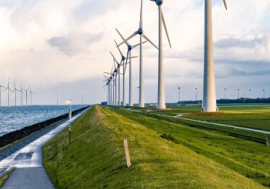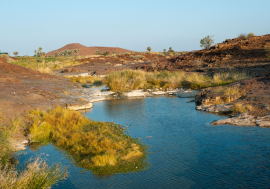Water viability is an engine of sustainable development for environmental social safeguards and governance. Ensuring its availability for everyone is imperative.
Governments, non-profit organizations, and private entities have been working to create inclusive environments, provide access to essential resources and services and promote equal opportunities for persons with disabilities.
These efforts aim to enable persons with disabilities to live full and independent lives; participate in their communities; and contribute their talents and abilities to society, especially in the face of climate change.
On April 20, 2017, 173 countries ratified the 2006 Convention on the Rights of Persons with Disabilities (CRPD). Created in 2007, it enshrines rights, such as inherent dignity, individual autonomy, non-discrimination, full and effective participation, accessibility and equality of opportunity, for persons with disabilities.
CRPD Article 9 requires access to the physical environment and public spaces and services in rural and urban areas. Article 19 focuses attention on living independently and inclusion by addressing equity in needs-responsive community services and facilities. Article 28 zeros in on adequate standards of living and social protection and requires State Parties to ensure access to clean water services that are appropriate and affordable.

SDG 6
Sustainable Development Goal (SDG) 6 represents a key strategy for enfranchising persons with disabilities. It promotes access to water and sanitation for all.
Specifically, it requires that “no one is left behind.” To achieve SDG 6, water, sanitation and hygiene (WASH) programmes must be both disability-inclusive and disability-accessible.
Supporting the objectives of WASH, SDG 10 advocates for the “reduction of inequality within and among countries,” mandating the social, economic and political inclusion of all people, including persons with disabilities.
Several organizations are helping to realize the ambitions of CRPD and SDGs.
As part of UNICEF’s WASH programme, Bungudu Primary School in Zamfara State in northern Nigeria built accessible latrines and hand-washing stations to accommodate children with disabilities. The project has improved sanitation and eradicated barriers that children with disabilities face at the school, where water and sanitation facilities had not been easily accessible.
In Madibunhana, in central Mozambique, the World Vision International has ensured that persons with disabilities can access water through rehabilitated and modernized boreholes with incorporated ramps, allowing 220 households to independently access adequate water. In addition, 70 inclusive wells and three water systems deliver clean and safe water to communities, as well as the provision of material subsidies for the construction of inclusive latrines.
Progress, however, has not been uniform.
In Kenya, students with disabilities still have not been able to enroll in the Kenya Water Institute that offers a programme that builds plumbing knowledge and expertise among youth in the country is 47 counties. Access could promote greater inclusiveness in the plumbing industry’s service offers and create jobs for these students.
Three key changes needed for disability-inclusive water, sanitation and hygiene
First, apart from ensuring availability of accessible amenities and infrastructure, it is imperative to establish ample water storage facilities for achieving water security and for managing hydrological variability, particularly for persons with disabilities. As households experience rising demand for freshwater and climate change disrupts water cycles, storage is becoming more urgent than ever.
Not only do accessible water systems increase the amount of water available for persons with disabilities, improved regulation of water flow and controls support a variety of ancillary services, such as hydropower and navigation.
Second, governments, development agencies and community-based organizations that oversee water resources and delivery, must develop harmonized inclusive policies and a regulatory framework for accessibility standards, guidelines, specifications and audits. This will boost opportunities for effective coordination and partnership on inclusive water systems and infrastructure.
Moreover, we must include persons with disabilities in water resource management, stakeholder consultations and outreach activities. As important, is to empower persons with disabilities to take on leadership and management positions at the community, local, and national levels to foster innovative water solutions.
Third, the World Bank recommends the provision of sufficient financial and physical resources to ensure that persons with disabilities have fair and equal access to affordable water sector services and programmes. These can range from communal services like irrigation facilities and boreholes to public water taps and public latrines.
Innovative fee structures, such as sliding-scale fees, loans, or grants to individuals or communities can provide financial assistance or relief. As such, we must entrust persons with disabilities to innovate and invent their own WASH solutions.
Conclusion
I recently served as a jurist for a Youth Water Challenge. I observed that students with disabilities did not participate in the competition. This experience underscores just one missed opportunity but made me wonder: “How many others have we missed?”
In this era of hyper-technology, we possess abundant open data on water from myriad ubiquitous sources.
Digital Earth Africa and its sophisticated water analysis tools is one example. Ghana offers a vision for what leveraging such a platform and applying data for building homegrown solutions could look like.
We have the technology and data, support of powerful global entities like the UN and the World Bank, and a talented and eager population of persons with disabilities ready to lead.
So let us proceed with the complete establishment of inclusive water systems to ensure we achieve the sustainable global goals to which we all aspire.
Nancy Marangu is Executive Director, Chemichemi Foundation, Kenya























